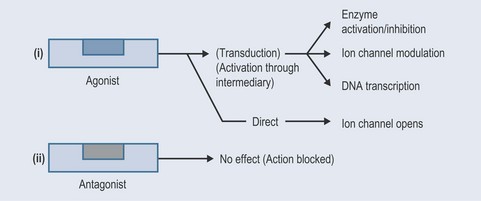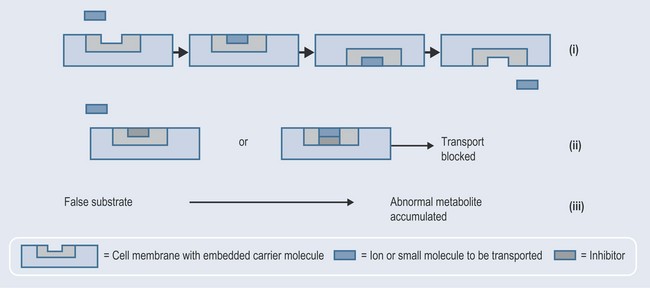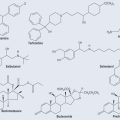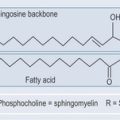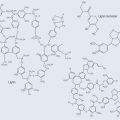Chapter 19 Pharmacodynamics
How drugs elicit a physiological effect
Proteins play an integral role in controlling body functions through their roles as:
The chemical composition of protein molecules allows for great variation in three-dimensional structure, creating sites which, generally speaking, will interact only with specific molecules that are able to fit into the particular site (see Figure 11.5, p. 84). Most drugs act by interfering with this process at the molecular level, fitting into sites intended for the original protein molecule.
The ‘Lock and Key’ Hypothesis
The simplest way to consider the action of a chemical on an enzyme or receptor is the concept of the ‘lock and key.’ A bond is made with the enzyme or receptor (Figure 19.1). If the protein is an enzyme, a chemical reaction will take place; if it is a receptor, it might trigger a chemical reaction or start a chain of events leading to a physiological response.
Enzymes
Enzyme Inhibition
• Competitive Inhibition
• Non-competitive Inhibition
Cofactors
The Logic Behind Drug Design
Receptors
Receptors work in a similar way to enzymes with regard to the attachment of chemicals to the receptor sites. In many cases, the receptors are linked up to intermediary systems such as G proteins (Figure 19.5, p. 141).
This time, however, the attachment of a molecule will activate the site, producing a physiological effect through a series of chemical reactions (agonist) [Figure 19.4(i)] or block the site and therefore the active response of the cell to the chemical (antagonist) [Figure 19.4(ii)].
Some drugs can have a dual action, simultaneously behaving as an agonist for one receptor and an antagonist to another, e.g. buprenorphine (see Chapter 32 ‘Analgesia and relief of pain’, p. 252).
Agonists
These molecules can activate a site by binding to it. Many hormones and neurotransmitters work in this way. They will either work directly as in the case of ion channels (see Figure 19.6) or through an intermediary (transduction), for example a G protein (Figure 19.5). The response from the stimulated cell can lead to:
Antagonists
When they bind to a site, antagonists do not stimulate a physiological response, e.g. antihistamines bind to the histamine receptors thus reducing the histamine response. Antagonists can either be competitive or non-competitive. Many drugs act either as agonists or antagonists.
G Proteins
G protein receptors are very diverse in their use, capable of being stimulated by photons from light in some cases, or chemicals such as histamines in others. They are therefore used by the visual and olfactory mechanisms, the autonomic system, in the regulation of the immune system and in adjusting behaviour and mood. The extent to which they are involved in the human body has resulted in a large proportion of orthodox medication being designed with them in mind.
Ion Channels
Ion channels are composed of protein and control the flow of ions in and out of cells (Figure 19.6; see Chapter 16 ‘How do drugs get into cells?’, p. 124 and Figure 31.2, p. 237). They differ according to:
Carrier Molecules
Ions and small molecules need to be transported across the lipid membranes of cell walls (Figure 19.7(i)). The carrier is a protein, which has a recognition site that makes specific for particular substrates. These can be blocked [Figure 19.7 (ii)] or made to take a false substrate, which then accumulates in the cell [Figure 19.7 (iii)] and affects the cell metabolism in some way.
Feedback Loops
The endocrine system is an example of a feedback loop system. It comprises a group of glands situated at various locations around the body, that secrete chemical messengers (hormones), which circulate in the bloodstream to affect distant organs or other glands. A classic feedback loop occurs within the female reproductive system to produce the menstrual cycle and the induction and shutdown of labour (see Figure 38.1, p. 300).
Factors Affecting a Patient’s Response to a Drug
Nutritional Status
When plasma protein levels become reduced, a larger amount of free, unbound drug is available for activity (see Chapter 16 ‘How do drugs get into cells’, p. 126).
Food–Drug Interactions
As already discussed, certain foods can affect absorption (see Chapter 15 ‘Methods of administration’, p. 120).




